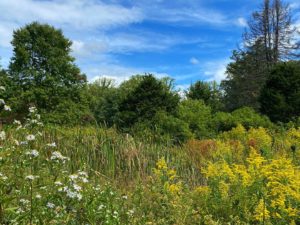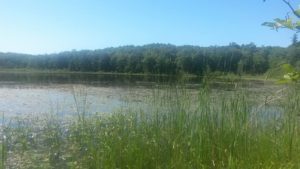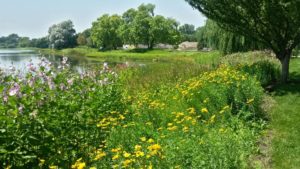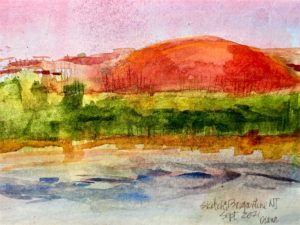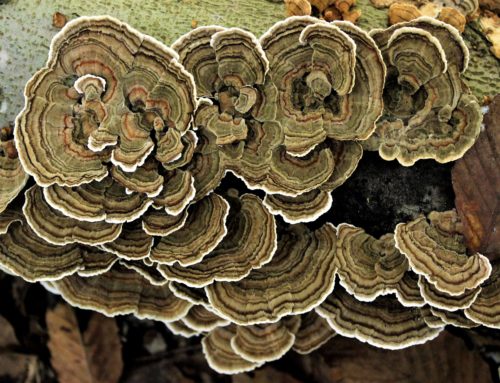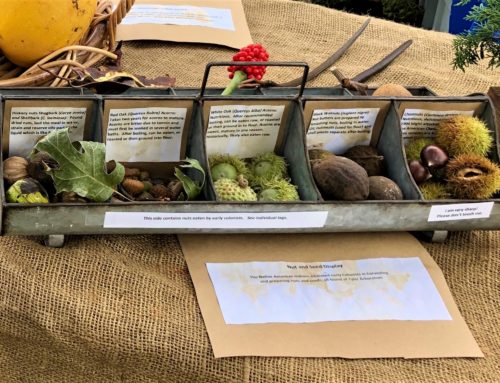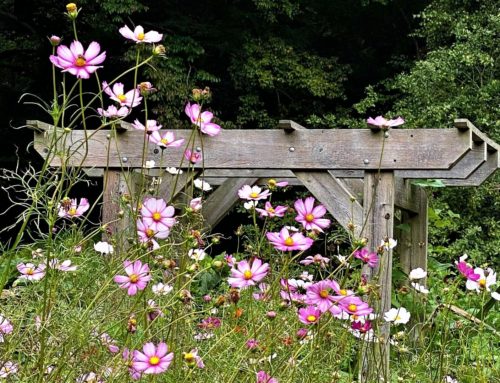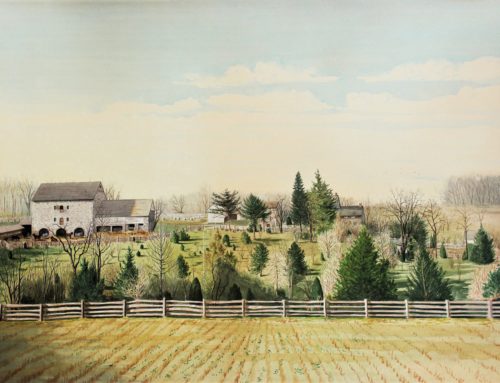It was an early evening in September. The shadows were long and deep on the blue-black water of the Choptank River on Maryland’s Eastern Shore. I was serving with the Maryland Conservation Corps, working at Tuckahoe State Park. It was that hour of the day when the diurnal wildlife retires, and the creatures of the night awaken. We’d started a campfire, my crew-mates and I; the smoke curled through the cool air as the great blue herons winged home and the barred owls called out over the waving marsh grasses. 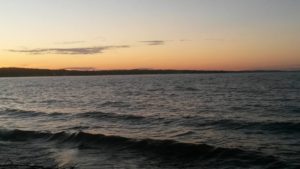
We were serving in AmeriCorps, a wonderful program – but one that means you get paid once a month and spend your time essentially broke. We lived on food stamps, which refilled at the start of the month and that night was near the month’s end. We were all out of money and would be for days. But that night we were celebrating. One of the rangers we worked with had taken a deer from his favorite hunting spot along the river and brought some in to share. We had the piece of flat iron we used to grill propped on two rocks over the campfire and the venison steaks were ready to be put on as soon as the coals were hot. Earlier that day, I had waded into the thick muck on the edge of the marsh and dug some arrow arum (Peltandra virginica) and cattail (Typha angustifolia) tubers. I’d wrapped them in tinfoil with salt and butter so that they could roast in the soil beneath the fire.
It takes time to grill venison steak, so by the time we sat down to eat on the stumps we used for seats, the stars were out in the sky — a great wash of them that stretched across the dark river. The grasses rustled in the wind that swept up from the Chesapeake, carrying with it the smell of the water and the rich, dark soil of the marsh. The crickets and cicadas sang as we ate, perhaps not the fanciest meal – but hot, tasty and filling. It remains one of the most delicious dinners I’ve eaten, because it was the land that fed us. For me, that is the story of the marsh.
There is something about a marsh that calls to people. It has been this way for thousands of years and all around the world. My own people come from County Kerry, Ireland, and even to this day we burn bricks of peat from the bog in the fire on special occasions. It is the only suitable fuel for a wake, or following a funeral, when there are stories to tell and things to remember.
It’s not only my family. The story of the marshes, and the people who rely on them, is a long one. From the terraced paddy fields in Southeast Asia, used for growing rice, to the marshes of Eastern North America, where the Tockwogh of Maryland’s Eastern Shore left middens of oyster shells so high that they still read as hills in the landscape. People like to live beside a marsh.
But why? Why this long connection, and what is happening now in that story?
Marshes are rich in biodiversity. They teem with life, from the fish fry hatched in the shelter of the grass, to the deer that stop by for a drink. Every level of the ecosystem is varied and diverse, ready to take advantage of the easy food, water and shelter that marshes provide. In fact, up to 40% of the world’s wildlife species live or breed in wetlands.
Humans are no different, and for thousands of years we have known to go to the marsh for food and supplies. Cattails, for instance, have been called the plant of a thousand uses. The fluffy seeds make excellent insulation and were often used to stuff swaddling clothes for babies. Sphagnum peat moss (Sphagnum spp) has been used for centuries as a dressing for wounds. Marshes served as the all-in-one market for people who needed to find their food, clothing, shelter and medicine in nature, rather than at a big box store.
For some people, it is still that way. I lived on the Eastern Shore for seven years. Many of my friends and coworkers began their days on a boat, pulling crab traps by headlamp in the back dark before dawn, or spent their Saturday mornings shivering in a deer blind. But what is becoming of that relationship? What role do marshes play in human life, and what role might they play in the future?
This moment in the story of the marsh is a grim one. Marshes are disappearing three times faster than forests. Wetlands are one of the most carbon-dense ecosystems on the planet – they store almost twice as much carbon as forests. And they buffer the coasts from disaster, lowering flood risk and protecting our communities. So why are they disappearing? The main reasons, of course, are climate change, urbanization, and habitat disruption. Between 1970 and 2015, 35% of the world’s wetlands were lost and the loss rate is only accelerating.
What happens next is up to us. We have a choice; to allow these essential, life- supporting, and beautiful landscapes to disappear forever – or to find new ways to live alongside them and incorporate them into the built environment.
As we discussed in Paradise Reimagined, just because we’ve done something the same way for years doesn’t mean that’s the way it has to be done. Take rain gardens for instance. In Restoring the Natural Rain Cycle, we explored how rain gardens help decrease runoff and improve the health of local rivers and streams. There are also living shorelines that replace hardscaping like weirs or boat launches. These living shorelines, like rain gardens, are designed and installed to mimic the natural landscape, restore the water cycle, and support local ecology. They work because they allow the land to function as it needs to. And they can be planted and maintained to bring beauty, biodiversity, and wildlife to the human community.
I’ve worked in many different marshes, wetlands and shorelines, from the edges of the Chesapeake Bay to the Chicago Botanic Garden in Glencoe, Illinois. I’ve spent summers fishing the marshes in Brigantine, New Jersey with my father and uncles, and untold weekend hours hiking through marshes and bogs in every state I’ve ever visited or lived in. I’ve waded in streams, cleaned out oyster hatcheries, and piloted boats along waterways in all seasons and most weather. The thing that I come away with every time is the beauty of those places. It takes very little to make them read as gardened spaces; just some attention to color and design, as well as an acceptance of the inherent beauty in ecological function. They will never look like a formal rose garden, but they don’t need to. Marshes and wetlands already speak to us. The way the land, water, and sky meet and balance one another…there is a rightness to these landscapes, to how essential they are, and how fragile they are.
Imagine for a moment a community along a river – the Delaware perhaps. Picture beautiful front yard rain gardens instead of storm drains. Imagine sweeps of soft shorelines full of sparkling grass and brilliant flowers. Think of water where children can swim safely, throw a line in for fish, and hear the frogs singing in the spring. Picture what that community would look like, and how it would feel to live there.
Imagine it – then take action. Do you have a wet spot in your yard? Consider a rain garden or seep garden. Does a river or stream run through your community? Put a group together to plant a living shoreline. Encourage your neighbors to do the same and advocate for better protection for marshes, wetlands and waterways on a national level. It’s time for the story of the marsh to stop being a cautionary tale of all we’ve lost, and all we still stand to lose. It’s time for it to become, once again, the story of home.


